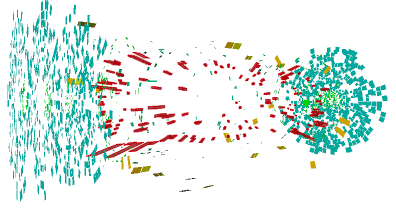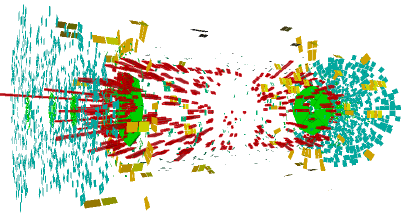Collisions at the LHC will contain events with unprecedented numbers of simultaneous proton-proton interactions, or "pile-up''. Pile-up refers to the presence of a signal in the detector which does not originate from the high pT interaction. It consists of two components: in-time pile-up, due to multiple proton-proton interactions occurring simultaneously within a single event, and out-of-time pile-up, resulting from contributions in previous bunch-crossings due to the large calorimeter integration time.
Pile-up poses special challenges to jet and missing ET reconstruction and calibration. At the LHC design luminosity, each bunch crossing will contain, on average, 20 additional minimum bias p-p interactions, contaminating jet signals originating from the high pT interaction and giving rise to extra jets, uncorrelated to those from the hard scatter. Even for the initial physics searches, pile-up is a difficult issue. And, obviously, the strategy for dealing with pile-up will be a major consideration in designs for the LHC luminosity upgrades, with up-to 400 additional minimum bias interactions. The next figures show the effect of pile-up on calorimeter signals on the same ATLAS di-jet event with 2 and 10 minimum bias events overlaid.
The SLAC group has initiated a broad effort in ATLAS to understand the global effects of pile-up on calorimeter signals, jets (reconstruction, energy scale, energy resolution, sub-structure, and properties) and missing ET, and to develop strategies and tools to account for such effects.
The present project consist of the study of calorimeter signal and jet reconstruction performance at the designed instantaneous luminosity of 10^34cm-2s-1, for which the present techniques to identify and calibrate hadronic jets have never been tested.

